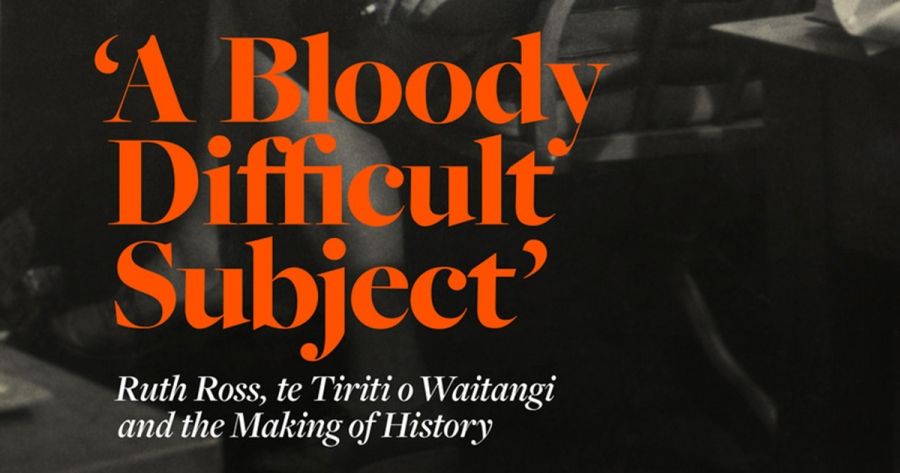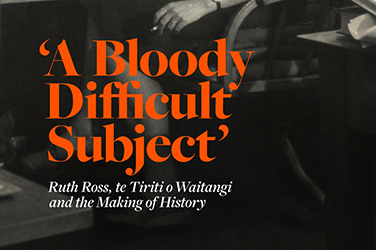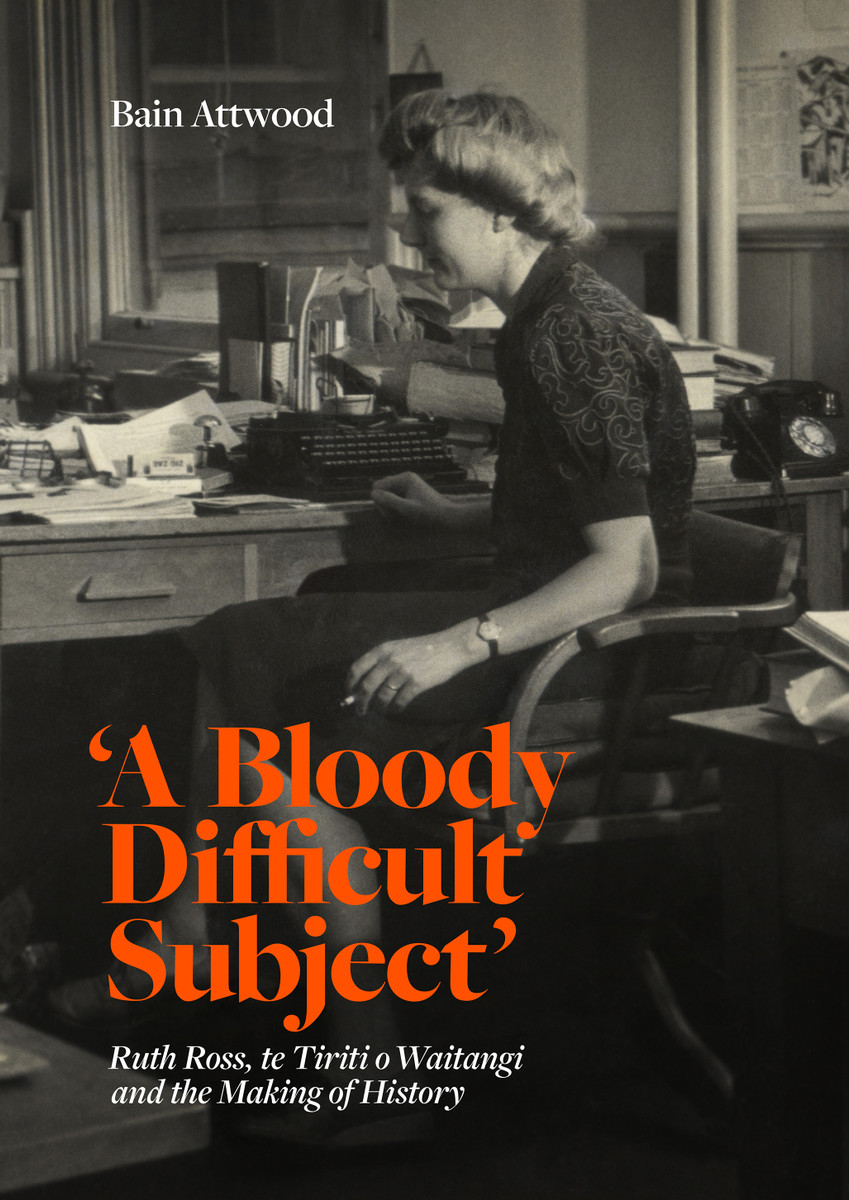
- Free Article: No
- Contents Category: History
- Review Article: Yes
- Article Title: Te Tiriti o Waitangi
- Article Subtitle: Complexity and ambiguity in history
- Online Only: No
- Custom Highlight Text:
The Treaty of Waitangi – in Māori, te Tiriti o Waitangi – has in New Zealand, during the past forty years, acquired a degree of significance in relations between the state and iwi and hapū (tribal groups). A permanent commission of inquiry, the Waitangi Tribunal, is empowered to report on claims by Māori that acts or omissions of the state have been or are contrary to the principles of the Treaty and have had prejudicial consequences.
- Article Hero Image (920px wide):
.jpg)
- Article Hero Image Caption: The interior of the national meeting house, Waitangi Treaty Grounds, Northland, New Zealand, 2017 (Urban Napflin/Alamy)
- Featured Image (400px * 250px):

- Alt Tag (Featured Image): Jim McAloon reviews '‘A Bloody Difficult Subject’: Ruth Ross, te Tiriti o Waitangi and the making of history' by Bain Attwood
- Book 1 Title: 'A Bloody Difficult Subject'
- Book 1 Subtitle: Ruth Ross, te Tiriti o Waitangi and the making of history
- Book 1 Biblio: Auckland University Press, NZ$59.99 hb, 302 pp
- Book 1 Cover Small (400 x 600):

- Book 1 Cover (800 x 1200):

The English texts differ from the Māori. By the first article the chiefs ‘cede … absolutely and without reservation all the rights and powers of sovereignty which … [they] exercise or possess’. The second ‘guarantees to the Chiefs and Tribes of New Zealand and to the respective families and individuals thereof the full exclusive and undisturbed possession of their Lands and Estates Forests Fisheries and other properties which they may collectively or individually possess’.
The differences are significant. The Waitangi Tribunal has observed that kawanatanga is something less than sovereignty, and tino rangatiratanga something more than mere possession. For many decades, insofar as white New Zealand thought about the Treaty, it was seen as at best a symbol of good intentions and the basis of the conceit that New Zealand had ‘the best race relations in the world’.
Ruth Ross (1920–82) had spent many years thinking about the Treaty before she published a ground-breaking article in 1972. Bain Attwood has set himself three tasks in A Bloody Difficult Subject: an intellectual biography of Ross; a study of her work and of subsequent scholarship on the Treaty; and a reflection on the meaning and practice of history in this context.
Ross was one of a group of exceptionally talented women students in the then Victoria University College’s history department. Her encounter with the Treaty began when her sometimes erratic mentor, J.C. Beaglehole, recommended her for the introduction to a facsimile publication (Ross was then living with her family in a remote part of the north). Ross’s fundamental position did not change much over the next quarter-century. The Treaty was drawn up hastily; the Māori version was not compatible with the English; there were consequently radically different understandings between the parties; and as a vehicle for British acquisition of sovereignty it was meaningless, not least because Lieutenant-Governor William Hobson proclaimed sovereignty over the whole country in May 1840, regardless of who had and had not signed. She also stressed that the relevant document was the one in Māori, and was highly critical of its missionary translators. Any characterisation of the Treaty as the foundation of a nation or as a ‘sacred compact’ was, as she said in 1972, ‘sheer hypocrisy’.
Much of what Ross argued – especially about the language differences and the priority of the Māori text – became foundational in the scholarship which developed after 1980. Attwood suggests that Ross’s main focus was ‘chaos’ – the ambiguity in the Colonial Office’s recognition of Māori sovereignty before 1840, the uneven coverage of signatures, the contrasting understandings of the parties, and Hobson’s proclamations. The language issues were only secondary. It was, Attwood suggests, ironic that other scholars emphasised the secondary point and built arguments upon it which Ross might not have endorsed.
Thus Attwood devotes considerable space to the Waitangi Tribunal’s mid-1980s work, with some highly illuminating discussion of the Tribunal’s creation in 1975. In its first years, the Tribunal was characterised by inanition. In 1980, Judge Edward Taihakurei Durie became chair, and with Graham Latimer, also Māori, took the Tribunal in new directions and, quite simply, made it clear that the Treaty had real force. Picking up Ross’s argument about the two languages, the Tribunal drew on standard principles of treaty interpretation and relevant American jurisprudence to argue that the Treaty should be understood in the way Māori would have understood it, that ambiguity should be construed against the drafter, and that the surrounding circumstances were important. As Attwood notes, the Treaty of Waitangi Act 1975 gave the Tribunal ‘exclusive authority to determine the meaning and effect of the Treaty as embodied in the two texts and to decide issues raised by the differences between them’. For Attwood, it was crucial that Durie’s Tribunal ‘chose’ to use this authority. I would rather say ‘started doing its job’.
In 1987, Claudia Orange published her influential The Treaty of Waitangi, a revision of her doctoral thesis. Orange naturally drew on Ross, especially on the two languages, but was less critical of other aspects of 1840. She placed considerable emphasis on the discussions between officials and Māori to illuminate how the Treaty was represented to Māori, and dealt at length with Māori views of the Treaty in succeeding decades. This last was an aspect into which Ross had not much enquired. As with the Tribunal, Attwood seems almost to be assessing Orange’s work – negatively – in light of the extent to which Orange differs from Ross, even though Ross and Orange were writing in very different contexts. Related to this is his distinction, drawing on Friedrich Nietzsche, of ‘critical history’ – myth-busting, in which Ross self-consciously engaged – and ‘monumental history’ which is ‘one that could meet a people’s need for example and inspiration in their action and struggle’. Orange, in particular, is taken to be indulging in the latter. Yet Ross and Orange were both offering readings of the past, and Ross’s own account could become ‘myth’.
Some scholars – notably Andrew Sharp, W.H. Oliver, and Giselle Byrnes – were highly critical of the Tribunal’s developing historiography. They saw anachronism and presentism – judging the past by standards of the present. Attwood reviews Sharp and Oliver with a degree of sympathy. The relationship between historical scholarship and the application of the law raises significant issues, as Attwood and I would agree, but it is not self-evident that law corrupts history. Nor, as I have argued elsewhere, was there only one set of standards in the past with which the Tribunal is concerned. One crucial question is whether ‘a Māori perspective’ and ‘academic history’ are irreconcilable. At places in the book I inferred that the argument was that they are, but Attwood discusses the thinking of J.G.A. Pocock at some length, helpfully emphasising Pocock’s advocacy of historiographical pluralism.
Attwood’s final reflections on the practice of historical scholarship are sensible. The historian, and the reader, should recognise that there is never one single meaning to anything and there never was. Complexity and ambiguity are always there. Historians should declare their interest, and not manipulate the record. In the end, some things cannot be resolved by historical argument, although this may help: historical scholarship cannot resolve how indigenous and settler-descendant live in a place like New Zealand or Aotearoa, or Australia, for these are political and moral questions.


Comments powered by CComment